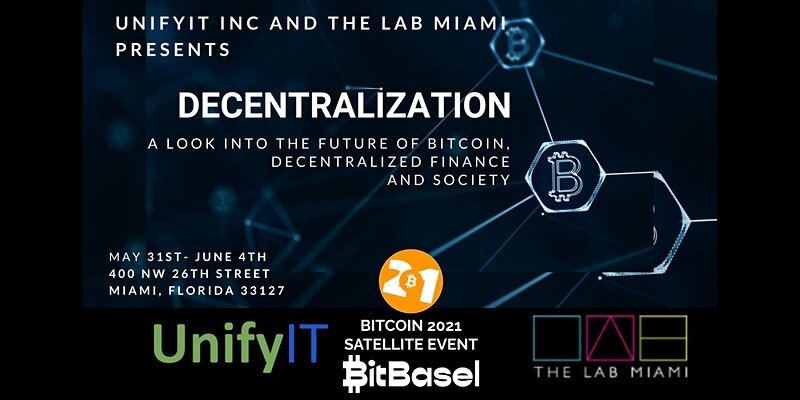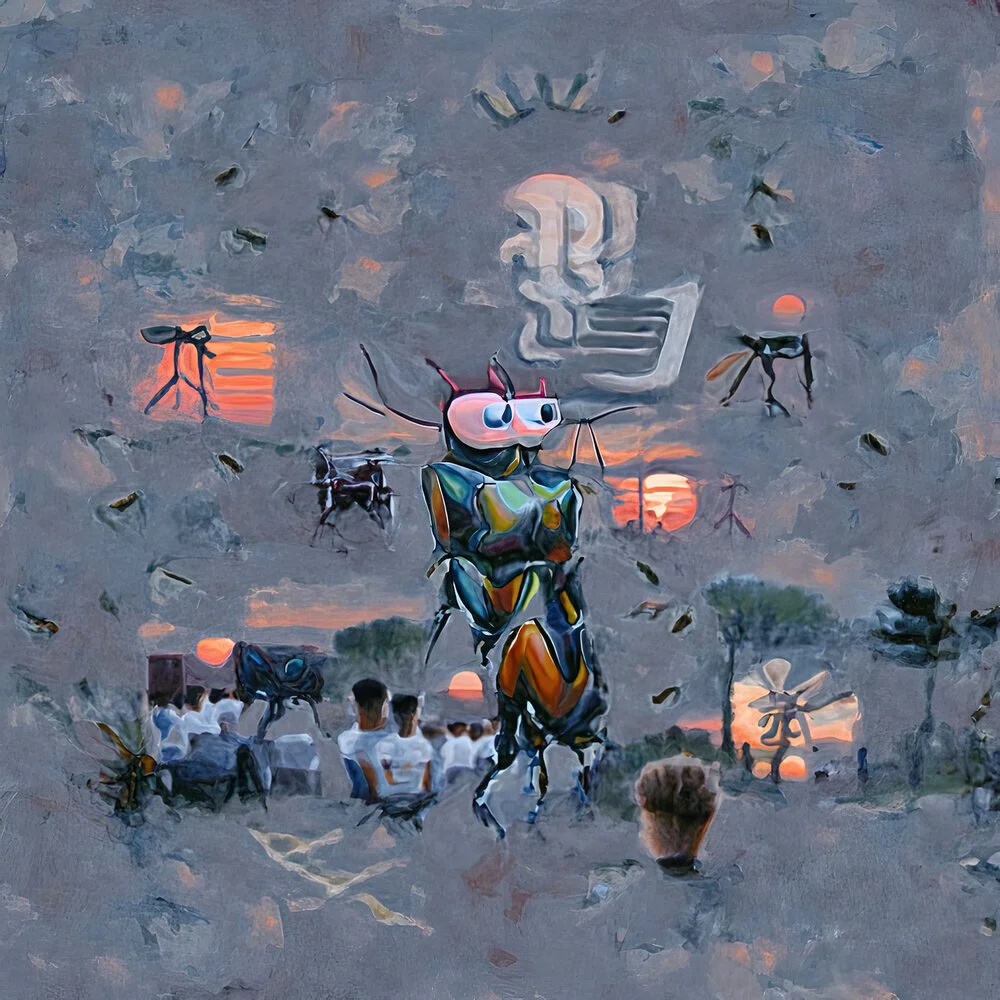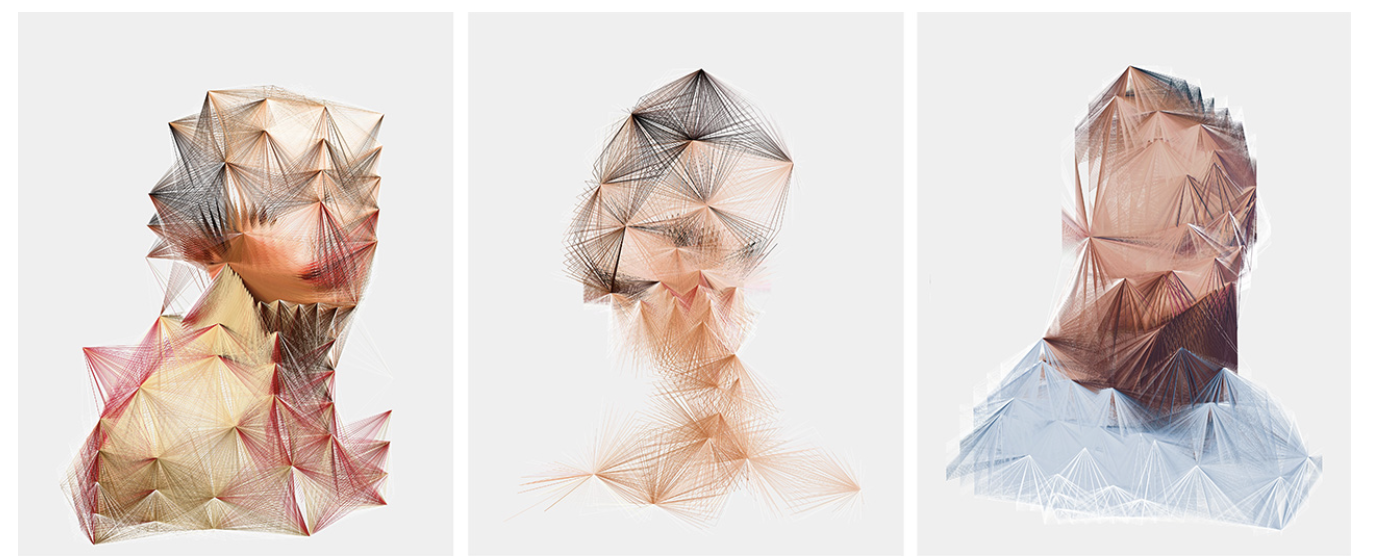ART BASEL LIVE September 21-26
‘Art Basel Live' is an exciting digital initiative extending the physical Basel show online from September 21–26, 2021. It will remain open to the public until September 26, 12 midnight CET.
The Online Viewing Rooms will provide the opportunity to explore the presentations of Basel exhibitors, from works from the show floor to rare online exclusives. Presentations from Unlimited and Parcours sectors will also be on view by way of dedicated Viewing Rooms. Developed specifically to provide insight into these large-scale and site-specific projects, these rooms will be supplemented with an audio guide featuring their respective sector curators, Giovanni Carmine and Samuel Leuenberger.
An exclusive digital VIP program will accompany 'Art Basel Live', and feature both virtual on-site and OVR Walk-throughs – led by Art Basel's VIP Representatives, in addition to impressive art world figures.
Science+Technology+Arts = STARTS Initiative / Ars Electronica Festival 2021
The Science+Technology+Arts = STARTS Initiative is a program of the European Commission that encourages synergies between the arts and technology that support the innovation industry and society. STARTS promotes the inclusion of artists in research and innovation activities throughout Europe.
On Thursday, the annual STARTS Day of Ars Electronica explores the potential of art and artists as catalyst in innovation through online talks, panels, workshops, and networking sessions and takes the audience on an online guided tour through the STARTS exhibition. Follow the link to the event:
https://app.swapcard.com/event/arselectronica2021/planning/UGxhbm5pbmdfNjUyOTAw
Further Recommendations:
STARTS Day – Thursday September 9th
Welcome to STARTS Day: 10:00 – 10:10 CEST
Morning Sessions
https://app.swapcard.com/event/arselectronica2021/planning/UGxhbm5pbmdfNjQ2NDYz
STARTS Talk: In Conversation with Territorial Agency: 10:10 – 10:40 CEST
Data Deep Dive: On Visualizing Critical Challenges: 11:00 – 12:30 CEST
Creating with Data: From Arts to Entrepreneurship: 12:40 – 13:40 CEST
Afternoon Sessions
https://app.swapcard.com/event/arselectronica2021/planning/UGxhbm5pbmdfNjQ2NDY0
STARTS Talk: In Conversation with Anastasia Pistofidou & Marion Real: 15:05 – 15:35 CEST
Fabrication Deep Dive: On the future of sustainable manufacturing: 16:00 – 17:30 CEST
MADE IN YOUR CITY: A NEW VALUE CHAIN FOR FASHION: 17:45 – 18:45 CEST
Robots are people, too | Exploring collaborative robotics through art
'Robots are people, too' - will provide a sneak preview into an exploration of collaborative robotics within the VOJEXT project.
In a worldwhere industrial robotics remain vastly hidden from the public eyes, this S+T+ARTS DIH project addresses some of the more delicate societal implications of new emerging technologies.
https://app.swapcard.com/event/arselectronica2021/planning/UGxhbm5pbmdfNjQwMTU4
Workshop: The intersection between Art and Industry - How to develop a successful collaboration framework
In this workshop, we will dive deep into the RAMP initiative and the Better Factory project underlying collaboration opportunities and challenges between industry and arts. We will do this with the help of the STARTS Collaboration Toolkit and the Art-Enabled Prototyping process within Better Factory.
https://app.swapcard.com/event/arselectronica2021/planning/UGxhbm5pbmdfNjUyODk1
Text Credit
Team Ars Electronica
Ethereum Community Conference 4 , Paris from 19-25th July 2021
Ethereum Community Conference 4 is happening in Paris from 19-25th July. The conference hosts more than 100 speakers and is now sold out, but you can still take part in some events organized around ETHCC.
In 2021, EthCC takes place as a physical event, after more than one year with very few opportunities to gather the Ethereum community IRL. While EthCC itself will be the flagship event with more than 100 speakers coming from all over the world, multiple side events, meetups, panels and parties will take place on the same week in Paris.
This is the EthCC Week, a moment of inclusive conversations, educational gatherings, welcoming celebrations. If you're planning an event related to public blockchains and the decentralized movement, reach out to have it published on this website: https://ethccweek.fr
Here are some, not to miss if you are in Paris:
MONDAY, 19 JULY
Crypto Finance Forum
Crypto Finance Forum est un lieu d’échange entre les acteurs du secteur crypto, les entreprises et startups, les décideurs et les autorités.
Monday, 19 July @ 9:00 Conference
TUESDAY, 20 JULY
Cross-Chain Salon
We've taken over a gallery space and planned for a chic Parisian gathering for the melding of cross-chain minds. As we all work together to build the future of Web3, this is a space designed for all blockchain builders to hang out in Paris.
Tuesday, 20 July @ 11:00-17:00 Conference
NFT Financialization
Deep dive at the intersection of DeFi and NFTs
Tuesday, 20 July @ 17:30-20:00 Conference
EthCC — Ethereum Community Conference
The Ethereum Community Conference is the biggest conference on Ethereum after DevCon. Halfway between DevCon5 and DevCon6, EthCC is the perfect place to mingle with the brightest and humblest minds of the community. EthCC puts a strong focus on Tech and People.
Tuesday, 20 - Thursday, 22 July @ 09:00-22:00 Conference
WEDNESDAY, 21 JULY
ETHécole
ETHécole is more than just regular event! Two tracks, park for networking, more than 100 people, a bunch of cool free swag and other perks!
Wednesday, 21 July @ 9:00-18:00 Conference
A Conversation on Nam June Paik with Rudolf Frieling and Constance Lewallen Mon, Jul 12 at 1 p.m. ET / 10 a.m. PT
Today, Monday, July 12, 1pm EST: Curator Rudolf Frieling joins Brooklyn Rail Editor-at-Large Constance Lewallen in a conversation on Nam June Paik, one of the founders of video art and video sculpture. You can register for this talk here.
Nam June Paik is one of the first truly global and transnational artists, Paik foresaw the importance of mass media and new technologies, coining the phrase ‘electronic superhighway’ in 1974 to predict the future of communication in an internet age. The exhibition held in SF Moma in 2021 — the artist’s first-ever West Coast retrospective — celebrated Paik’s collaborative approach that transcended genres and traditions, while also highlighting the artist’s innovative, playful, and profoundly radical work. You can view it here:
https://www.sfmoma.org/read/nam-june-paik-exhibition-guide-curator-picks
KVG @ VivaTech Paris June 16 - 19, 2021
KVG is extremely happy to announce its participation at VivaTech Paris! VivaTech is Europe’s biggest startup
and tech event running June 16 - 19, 2021.
Kevin Abosch ‘Physiology of an NFT’ 2021 installation at Viva Tech Paris.
One of the many topics addressed will be the ways in which technology has impacted the creation, curation, and diffusion of entertainment in the 21st century. In collaboration with Beaux Arts & Cie there will be an immersive art room which KVG will be part of presenting our CADAF program ft. both physical and NFTs works from Sofia Crespo, Entangled Others Studio, Cryptopunks and Kevin Abosch showcasing his new work with a special installation. In addition, there will be a rich program of art talks & much more! Stay tuned!
Installation view KVG @ Viva Tech Paris 2021.
Works by LarvaLabs, Sofia Crespo, Entangled Others Studio.
PROOF OF ART. A BRIEF HISTORY OF NFTS, FROM THE BEGINNINGS OF DIGITAL ART TO THE METAVERSE
FRANCISCO CAROLINUM LINZ / 11. JUN. 2021 TILL 15. SEP. 2021
SONDERAUSSTELLUNG
Duration of the exhibition: 10 June - 15 September 2021
Francisco Carolinum, Linz
‘Francisco Carolinum presents PROOF OF ART, the world's first museum exhibition on the history of NFTs in art, curated by Jesse Damiani. The show can be viewed offline in the museum, and online in Cryptovoxels, a blockchain-based virtual world. Works of 25 artists will be on display at the museum. Using the media of projection, software, videos, installations and digital files, they explore systems of meaning and value, examine the role artists play in a high-tech environment, and discuss the impact of virtual spaces on our everyday reality. The exhibition space in Cryptovoxels will feature virtual works by around 25 artists.
Leaving aside the hype surrounding NFTs, these are, above all, a technology designed to solve a problem: the overabundance of digital files, which can be downloaded, compressed, copied, shared and merged. A NFT, on the other hand, is a certificate of authenticity for each digital file that is stored in the blockchain, thus rendering these files unique. NFTs also function as digital signatures of artists.
In light of the developments surrounding NFTs in art and the art market, a retrospective of their history - and why they are suddenly on everyone's lips - becomes compelling. After a series of remarkably high-priced NFT artworks by digital artists such as Pak and Trevor Jones caused a stir in the art scene in 2020, Beeple set a new record in early 2021 with Everydays - The First 5000 Days fetching USD 69.3 million at the now legendary Christie's auction. Since 2007, he had posted one work of art a day on the internet, which he then combined to form the monumental collage Everydays and put up for auction as a JPEG. Beeple, alias Mike Winkelmann, thus became the third most expensive living artist - after Jeff Koons and David Hockney. The crypto-art community, a motley group of new media artists, 3D designers and visual effects experts, suddenly became the main player in an unprecedented shake-up of the art market.’
Read full press release HERE.
Non-fungible Tokyo 2021
Join with us the Non-Fungible Tokyo 2021!
June 10-11, Tokyo, Online Conference
Kate Vass will be joining a panel with Kevin Abosch on 11th of June 12:00 - 12:30 (JST / GMT+9)
Discuss the future of NFT beyond the border.
This conference is the fourth in a series, starting with the Tokyo Blockchain Game Conference, which was held for the first time in Japan in 2018. Although we have been working to promote NFT (Non-Fungible Token) and develop a healthy industry from the early stage, as the market has rapidly expanded from 2021, discussions about the future of NFT have suddenly begun.
JOIN THE COLLECTOR'S CLUB TALK WITH KATE VASS
Virtual Talk: Collecting NFTs with Digital Gallerist Kate Vass
June 2, 2021
1PM EST / 7PM ZURICH
Join us for a virtual talk with digital gallerist Kate Vass, hosted by Geneva editor Elisabeth Johs. Everything you wanted to know about collecting NFTs and displaying digital artworks! This event is open to members only. Tickets for $10 available for non-members who would like to join.
Kate Vass is an art collector and entrepreneur with a background in art and finance. She is the founder and creative director o Kate Vass Galerie, focusing on generative art (new media art, digital and crypto) and an advisory firm F.A.R.E Consulting, specializing in finance, art advisory and M&As. Kate also supports gender equality & sustainability via her other initiatives like #womensupportingwomen & #letsgreentheplanet, writes her art blog on Medium, and occasionally speaks at various blockchain, art and finance conferences.
New article by Forbes about NFTS feat. Kate Vass Galerie & Konig Galerie: PUNKS, KITTIES UND EINE REVOLUTION
Recent article by Forbes (DACH) about Punks, Kitties and revolution of digital art. They can be traded, but not replicated: Non-Fungible Tokens (NFT). The three letters have sparked a global hype around the collection of digital objects. Between astronomical profits and unrealistic wishful thinking. https://www.forbes.at/artikel/punks-kitties-und-eine-revolution.html
29. MAI 2021
Man kann sie zwar handeln, aber nicht replizieren: Non-Fungible Tokens (NFT). Die drei Buchstaben haben einen globalen Hype rund um das Sammeln von digitalen Objekten ausgelöst. Im Zentrum: Eine Kunstwelt zwischen astronomischen Profiten und unrealistischen Wunschvorstellungen.
Im Sommer 2017 starteten die beiden Softwareentwickler John Watkinson und Matt Hall in ihrem Unternehmen Larva Labs ein skurriles Projekt namens „Cryptopunks“. Es handelte sich dabei um eine digitale Sammlung aus 10.000 verpixelten Figuren, die jeweils durch Attribute wie Augenmasken, Zigaretten, Clownnasen und Hasenzähne einzigartig gestaltet wurden. Jedes dieser 24 × 24 Pixel großen Bilder konnte gekauft werden – von jedem, der eine Ethereum-Wallet hatte, also mit der Kryptowährung Ether (ETH) bezahlen konnte.
Ein Jahr später, 2018, wurden 24 dieser Artefakte in einer Blockchain-Ausstellung der Kate Vass Galerie in Zürich gezeigt. Es war das erste Mal, dass die Cryptopunks in der physischen Welt zu sehen waren. Zu jedem Kunstwerk – der Preis betrug 5.000 CHF pro Stück – gehörte ein versiegelter Umschlag mit einem digitalen Schlüssel, der den Beweis für dessen Originalität und Einzigartigkeit darstellte. Die Ausstellung war ein voller Erfolg: Das erste Set von zwölf „Punks“ war nach der Eröffnungsnacht ausverkauft. „Es war perfektes Timing“, erinnert sich Kate Vass, Inhaberin der Galerie, die selbst auch eines der Bilder gekauft hat. „Jetzt kauft jeder NFTs, mittlerweile sind sie aber allesamt überteuert.“
Dass die damals investierten 5.000 CHF ein Schnäppchen waren, ist aus heutiger Sicht mehr als nur eine Untertreibung: Mittlerweile ziehen die digitalen Bilder nämlich selbst die Aufmerksamkeit der größten Auktionshäuser der Welt auf sich. Ein Cryptopunks-NFT mit neun Punks wird im Mai 2021 von Christie’s versteigert – Expertenschätzungen zufolge könnte der Verkauf bis zu neun Millionen US-$ einbringen. Ein Kenner aus dem Auktionshaus Christie’s bezeichnet die Cryptopunks-Sammlung sogar als „Alpha und Omega der Crypto-Art-Bewegung“. Seit der Entstehung der Punks hat die gesamte Sammlung bereits mehr als eine halbe Milliarde US-$ an Verkäufen generiert.
Der bisher teuerste Punk ist die Nr. 7.804: Das Bild, das ein hellblaues Alien mit Pfeife und Sonnenbrille zeigt, ist rund 7,5 Millionen US-$ wert.
Um zu verstehen, wie es zu derartigen Verkaufszahlen kommen konnte, müssen wir einen Blick hinter die Kulissen der NFTs werfen. Dort agiert nämlich die Blockchain-Technologie, eine dezentrale öffentliche Datenbank, bestehend aus unterschiedlichen Plattformen und Systemen – und auf ihnen laufenden Kryptowährungen. Auch NFTs werden auf der Blockchain hochgeladen, zumeist – aber nicht immer – auf der Plattform Ethereum. Mit der gleichnamigen Währung (Kürzel: ETH) werden die Transaktionen dann abgewickelt. Jedes dieser Non-Fungible Tokens – Non-Fungible bedeutet „nicht austauschbar“ – ist ein Unikat und kann nicht dupliziert werden (im Gegensatz zu Bitcoin oder Fiatgeld). „Technisch gesehen ist ein NFT eine digitale Abbildung von geistigem Eigentum“, erklärt Philipp Sandner, Professor an der Frankfurt Business School und Leiter des dortigen Blockchain Centers. „Dieses Eigentum kann so ziemlich jede kreative Erfindung sein: ein Bild, ein Song oder ein Gedicht.“ NFTs können darüber hinaus aber auch die Form von Baseballsammelkarten, Tweets oder Magazincovern annehmen (etwa das jüngste Titelbild der Forbes-US-Ausgabe; das NFT davon wurde um 330.000 US-$ für den guten Zweck versteigert).
Künstler und Kreative haben somit also die Möglichkeit, ihre Arbeiten eigenständig online zu zertifizieren und zu monetarisieren – zuvor konnten digitale Werke per Download ganz einfach kopiert werden. „Der technische Kern existiert schon seit mehreren Jahren“, sagt Sandner. „Da nun aber Kreative die Technologie für sich entdeckt haben, bekommt das Thema eine ganz neue Einflugschneise.“ Der Verkauf von NFTs, der aktuell ausschließlich über Kryptowährungen geschieht, läuft auf eigens dafür vorgesehenen digitalen Marktplätzen, vergleichbar mit Amazon oder E-Bay. Die bekanntesten darunter heißen Rarible, Nifty Gateway (s. auch S. 23) und Open Sea und unterscheiden sich in ihrem Fokus und in ihrer Größenordnung.
Laut einem Bericht von Nonfungible.com betrugen die Verkäufe von NFTs im ersten Quartal 2021 mehr als zwei Milliarden US-$. Das ist eine Steigerung von etwa 2.100 % gegenüber dem vorherigen Quartal. Doch wie konnte in kürzester Zeit ein milliardenschwerer Markt heranwachsen? Verlagern Menschen in einer globalen Pandemie ihre Ausgaben in die digitale Welt? Oder trifft die Kryptobranche nach dem ICO-Wahn von 2017 und mit dem Anstieg des Bitcoin-Kurses plötzlich auf eine so viel breitere Akzeptanz? Ein springender Punkt, so Sandner, sei die neue Darstellungsweise – und die damit einhergehende bessere Verständlichkeit von NFTs: „Die Abstraktheit des Themas wird durch die Darstellung als digitales Kunstwerk plötzlich begreifbar. Eine virtuelle Sammelkarte der NFL (National Football League, Anm.) lässt sich mit den Pokémonkarten, die man in der Kindheit gesammelt hat, vergleichen“, erklärt er. Durch das Mitmischen von Berühmtheiten aus der Hip-Hop- oder Schauspielszene (etwa Rapper Snoop Dogg oder Schauspielerin Lindsay Lohan) schenken neue, breitere Gesellschaftsschichten dem Thema Blockchain und ihren Möglichkeiten neue Aufmerksamkeit.
Besonders aufmerksam wird das Geschehen in der Kunstszene verfolgt: Auktionshäuser und Galerien sehen sich keineswegs als obsolet an. Bei einer Auktion des renommierten Londoner Auktionshauses Christie’s wurde das digitale Gemälde „Everydays: The First 5000 Days“ des Künstlers Mike Winkelmann alias „Beeple“ im März für 69,3 Millionen US-$ versteigert. Das nicht weniger renommierte Auktionshaus Sotheby’s erzielte nur Wochen später bei seiner ersten NFT-Auktion 17 Millionen US-$.
Und auch Galeristen haben einen Weg gefunden, sich ein Stück vom Kuchen zu holen: Der Berliner Galerist Johann König setzte zuletzt im Zuge einer NFT-Auktion auf der Plattform Decentraland 46,3 ETH, umgerechnet rund 150.000 €, um.
Decentraland ist eine virtuell „begehbare“ Welt, in der man Land kaufen und ganze Events veranstalten kann – König organisierte dort die Ausstellung „The Artist is Online“. Nun will er seine Galerie als Vorreiter in der Szene positionieren: „Momentan bauen wir an unserem eigenen NFT-Marktplatz, bei dem auch traditionelle Zahlungsmittel wie Kreditkarten oder Banküberweisungen akzeptiert werden.“
Die Transparenz des NFT-Markts und die eigenständige Preispolitik, die mehr Macht in die Hände der Kunstschaffenden legt, begrüßt König sehr: „Der klassische Kunstmarkt ist sehr undurchsichtig und kann insbesondere auf Laien abschreckend wirken. Ich finde, dass die Offenlegung von Preisen für Kunst ein Demokratisierungsprozess sein kann. Und man holt neue Interessenten und potenzielle Käufer näher an sich heran.“
Ob das wirklich so stimmt, bleibt jedoch fraglich. NFT-Verfechter sagen, dass der neue Markt dem Künstler die Kontrolle über sein Werk zurückgibt und für jedermann zugänglich ist.
Doch die hohen Preise zeichnen ein ganz anderes Bild. Allein Beeples Rekordverkauf spiegelt wider, was auch im traditionellen Kunstmarkt gang und gäbe ist: Wenige große Künstler werden reich, während die Mehrheit keine Möglichkeiten hat, Geld und Aufmerksamkeit zu bekommen. Die wahren Gewinner sind wie immer in einem Goldrausch all jene, die die Schaufeln herstellen: In diesem Fall sind das die NFT-Marktplätze, die bis zu 15 % Kommission verlangen.
Egalitär oder nicht – der NFT-Boom eröffnet einigen Künstlern neue Wege, ihre Kreationen zu monetarisieren und zu kontrollieren. Die Gunst der Stunde nutzt etwa auch das Berliner Künstlerkollektiv Sucuk und Bratwurst. Ihre digitalen Designs sind mittlerweile in Musikvideos und auf Magazincovern von internationalen Stars und Marken wie Post Malone oder Adidas zu sehen. Ihr NFT „Broken Dreams“ ging auf der Plattform Foundation für 1,20 ETH (umgerechnet 4.100 US-$) über den Tisch. „So schnell und direkt für ein Kunstwerk bezahlt zu werden – insbesondere ein rein digitales –, ist für uns neu. Wir bemerken, dass viele Grafiker und Designer in unserem Umfeld dies auch als Anreiz sehen, selbst aktiv zu werden“, so Mitgründer Lukas Olgac. Kaum Blut geleckt, arbeitete das Kollektiv auch schon an seinem nächsten NFT-Streich: einer Kollaboration mit dem Deutschrapper Xatar, der im Zuge eines neuen Song-Release sein eigenes NFT veröffentlicht hat.
Nur eine kurze U-Bahn-Fahrt von dem Kollektiv entfernt lebt und werkt auch Simon Denny. Der gebürtige Neuseeländer, der seit Jahren in Berlin lebt, verfolgt die Szene schon lange – als Investor wie als Künstler. „Endlich trafen Kunst und Technologie mit beiderseitigem Interesse aufeinander“, so Denny. Die Kehrseite des Ganzen: Der Prozess des Kryptominings ist ein Energiefresser. Ethereum-Miner (Computer, die komplexe Algorithmen lösen) allein verbrauchen laut Digiconomist mehr als 42 Terawattstunden Energie (TWh) pro Jahr. Im März 2021 veröffentlichte Denny seine erste NFT-Kollektion mit dem Titel „NFT Mine Offsets“. Dafür kaufte er einen Ethereum-Mining-Computer für 3.000 € bei E-Bay, fertigte darauf sein NFT und spendete den Computer anschließend an ein Klimamodell-Projekt der Oxford University. 28 ETH – oder 50.000 US-$ – generierte der Verkauf. „Krypto ist ein Boom-Bust-Zyklus auf Steroiden“, gibt er zu. Aber: „Die Idee, dass man für ein JPEG oder ein Stück des Internets Geld verlangen kann, ist gewaltig.“
Doch der Schein, ein Allheilmittel gegen Raubkopien gefunden zu haben, währt nicht lange: Sogenannte „Scammer“ ahmen Künstler und ihre Werke nach und geben sich als diese aus; andere erschaffen ganze Marktplätze von Kopien. „Das ist eine normale Entwicklung auf einem neuen Markt, wir haben das Gleiche auf dem traditionellen Kunstmarkt erlebt“, so Vass. „Ich kann nur hoffen, dass das Gute das Schlechte besiegt.“ Das Versprechen auf leichtes Geld lockt Kunstschaffende wie Sammler, die Millionen US-$ ausgeben wollen, also auch auf falsche Fährten.
Auch Sandner sagt, dass mit jedem Hype eine Menge Imitatoren und Glücksritter kommen. „Mittlerweile ist der Markt auf der Angebotsseite völlig übersättigt. Dies spiegelt sich auch in den sinkenden Aktivitäten und Verkaufszahlen auf den NFT-Marktplätzen wider“, so der Experte. Laut der Nachrichtenseite Nonfungible.com war der Durchschnittspreis eines NFTs bereits im März 2021 um 70 % niedriger als im Vormonat. Auf Opensea betrugen die Verkäufe im April 2021 „nur“ je rund 100 Millionen US-$ – im Gegensatz zu 150 Millionen US-$, die die beiden Plattformen im Vormonat März jeweils generierten. Sandner sieht diese Entwicklung als organischen Prozess, mit dem nach einem Höhepunkt wie der Beeple-Auktion zu rechnen war. Und die vermeintliche NFT-Blase, die bald platzen könnte, sei in Wahrheit auch nur ein Bläschen: „In der bisherigen Phase wurden Transaktionsvolumen bewegt, die in keinster Weise mit dem damaligen ICO-Boom vergleichbar sind. Damals waren ja viele Milliarden US-$ im Spiel.“ Was also, wenn die NFT-Blase (oder laut Sandner: Bläschen) dennoch platzen sollte? „Die Blase wird platzen“, sagt Vass nüchtern. „Und dann wird sich der ganze Staub verziehen – und die wahren Pioniere und Verfechter von digitaler Kunst werden bleiben.“
Text: Olivia Chang und Chloé Lau
Fotos: X
Bitcoin Conference Miami | DECENTRALIZATION: A look into the future of Bitcoin, Decentralized Finance and Society.
Tickets available HERE.
A look into the future of Bitcoin, Decentralized Finance and Society.
Location
The LAB Miami
400 Northwest 26th Street
Miami, FL 33127
United States
About this event:
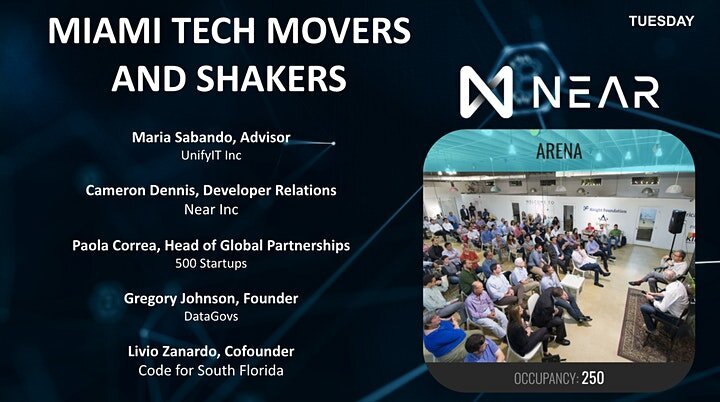
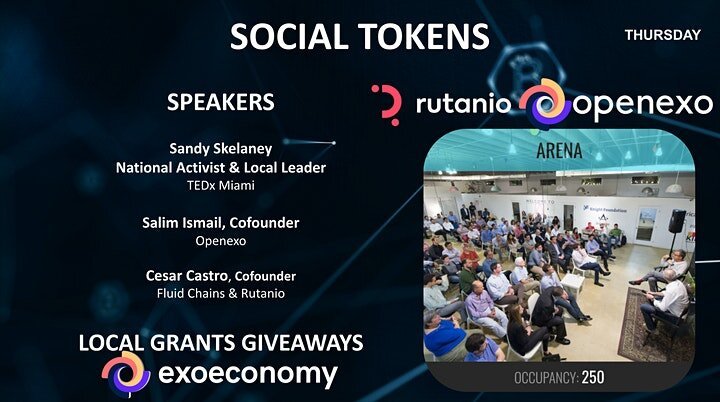
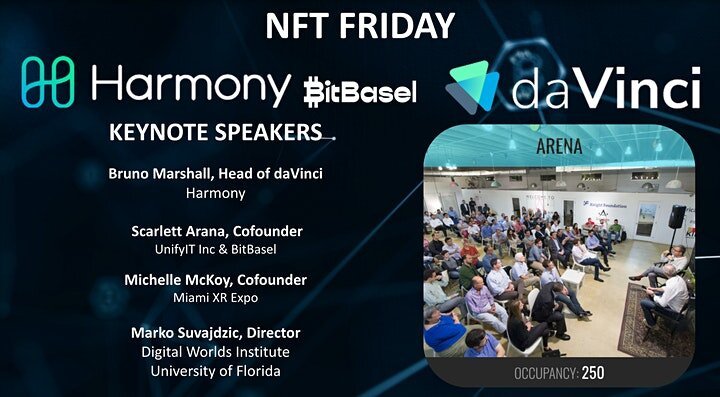
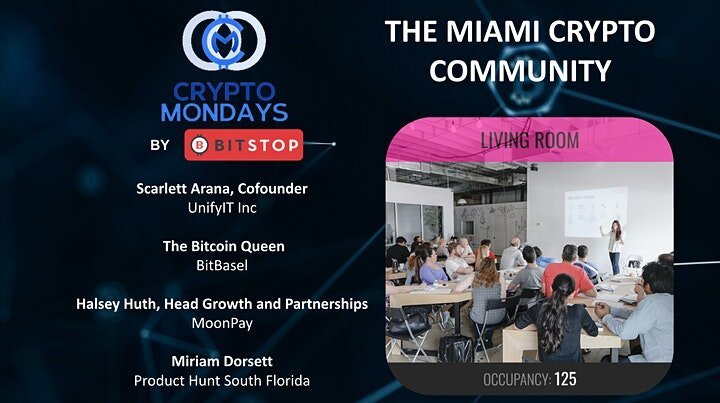
The Bitcoin Center NYC
RE: HUMANISM ART PRIZE 2. INTERVIEW WITH ENTANGLED OTHERS STUDIO AT ESPOARTE
Interview with ENTANGLED OTHERS STUDIO by Ennio Bianco
Re:Humanism 2, the great exhibition between Contemporary Art and Artificial Intelligence, is currently underway at MAXXI in Rome.
Conceived and realized by the cultural association Re:Humanism, curated by Daniela Cotimbo, the project develops in two moments: an international call for artists and the exhibition of the eleven finalist artists of the call. Ennio Bianco joined the winners of the second edition of the Prize, the Berlin-based duo Entangled Others Studio, composed by Feileacan McCormick and Sofia Crespo.
It was a difficult task to synthesize their research focused on ecology, nature and generative arts, with a focus on the production of new "more-than-humans "1 forms of presence and life in digital space.
Feileacan McCormick is a generative artist, researcher and former architect, heavily influenced by the development of new deep learning technologies and who has begun to reshape these meditations on nature by focusing on the biodiversity that enriches our Planet.
Sofia Crespo is a working artist with a huge interest in bio-inspired technologies. One of her main researches concerns the way organic life uses artificial mechanisms to simulate itself and evolve. This involves the idea that technologies are part of the very product of the organic life that created them and not a completely separate object. Crespo examines the similarities between AI image formation techniques and the way humans express themselves creatively and cognitively by recognizing their world. Her work questions the potential of AI in artistic practice and its ability to reshape our understanding of creativity...
Read the full interview:
https://www.espoarte.net/arte/re-humanism-art-prize-2-intervista-a-entangled-others-studio/
Sotheby's | Natively Digital: A Curated NFT Sale
‘Natively Digital is a collection of remarkable, unique artworks co-curated with Robert Alice. We showcase some of the earliest, raw NFTs built on pre-Ethereum chains alongside newer, complex NFTs that showcase the cutting edge technical innovation. From across four continents, we have sourced emerging crypto artists and the ‘old masters’ alike to exhibit their works. The landmark auction will provide an opportunity for collectors, curators, and enthusiasts to focus on the emerging ideas and aesthetics contained within these works. The Natively Digital auction will occur between June 3 and June 10 online at sothebys.com. - Sotheby’s
Discover more and browse lots HERE.
New York Times: The Untold Story of the NFT Boom
“It’s at 40.7 ETH,” FEWOCiOUS gasped. “That’s crazy.”
It was not quite 4 in the afternoon, and Victor Langlois, an 18-year-old cryptoartist, was at his desktop computer, watching a frenzied bidding war between two art collectors. Langlois — known by his art name FEWOCiOUS, or Fewo, to his friends and fans — was dressed in a white hoodie that he had designed, its arms covered in his own psychedelic art, including an eyeball and sunflower afloat in a blue sky. The room’s window had been covered with cardboard to keep things dark, and a string of blue LED lights shone down from the ceiling. As the numbers rose, Langlois nervously pulled his beanie off and on, running his hands through his poofy black hair.
The bidding war began a day earlier, on Feb. 7, on the auction site SuperRare, when an art collector called @thegreatmando1 offered Langlois 15 ETH for his digital painting “The Sailor.” ETH is short for Ether, a cryptocurrency much like Bitcoin. A single unit of Ether can be worth a lot: The day of the auction, 1 ETH was equal to $1,600. That meant @thegreatmando1 had offered $24,000 for Langlois’s artwork. But the sum jumped when another bidder, @yeahyeah, offered 18 ETH, or roughly $33,000. The two bidders pushed the price up and up, until by noon it reached $67,905.92.
Langlois was initially unaware of this remarkable news. He had slept in, after a long evening hunched over his iPad making more art. He only scrambled to check the bidding when a fellow artist pinged him: “Guess who got a $60,000 bid?”
Read more: at NYTimes
BREADCRUMBS: ART IN THE AGE OF NFTISM. New show at Galerie Nagel Draxler ft. Osinachi, Kevin Abosch, Anna Ridler, Rhea Myers and many more.
Opening today May 12th at Galerie Nagel Draxler: BREADCRUMBS: ART IN THE AGE OF NFTISM CURATED BY KENNY SCHACHTER
“ A “breadcrumb” or “breadcrumb trail” is secondary navigation scheme that reveals the user's location in a website or Web application. The term comes from the Hansel and Gretel fairy tale in which the children drop breadcrumbs to form a trail back to their home. The intent of the exhibit is to embrace and showcase a diverse and eclectic group of early and recent adapters employing NFTs on the Ethereum blockchain to create and disseminate digital art via a gallery context and into the wider stream of commerce. The show will put to rest two demonstrably false assumptions widely held by today’s art industry: that this is a fad, and/or not art. “
Full press release and link to the exhibition page HERE.
Text credit Kenny Schachter / Galerie Nagel Draxler
Artists Featured:
Kevin Abosch
Olive Allen
Darren Bader
Eva Beresin
Tracey Emin
Sarah Friend
Rulton Fyder
Rhea Myers
Osinachi
Max Osiris
DotPigeon
Anna Ridler
Robness
Koichi Sato
Kenny Schachter
Theo Triantafyllidis
CryptoPunks NFTs sell at Christie’s for $16.9 million
9 digital Cryptopunks by LarvaLabs
Ultimate punk #795, exhibited at Perfect & Priceless show in 2018 at Kate Vass Galerie. Physical & digital component, signed by artist. Unique work.
Another 'sale of digital art' at Christie's took place last night on 11th May 2021, where well-known 9 Cryptopunks by Larvalabs were auctioned. As Kate Vass Galerie predicted sale went under 20mio $ , but with still very strong results! Congratulations to a talented duo of artists Matt Hall & John Watkinson!
The sale was in Fiat this time and the work has been auctioned by LarvaLabs directly. The group initially kept 1,000 of the NFTs for themselves and gave away the rest.
There are still rare 24 physical punks among certain group of collectors - 'Ultimate punks', which have both digital and physical component, do you think if the physical component had been taken place at the Christie's sale, the sale results would be higher?
More in the review by Jacob Kastrenakes at the Verge.
CryptoPunks have soared in popularity since NFTs started blowing up in February. Two alien punks sold in March for more than $7.5 million each. Another seven have sold for more than $1 million, all just in the past few months.
KVG in JING CULTURE & COMMERCE'S GUIDE TO THE CRYPTO SPACE
NFTs And Cultural Institutions: A Guide To The Crypto Space For Museums And The Arts
by Jing Culture & Commerce , May 4, 2021
Kate Vass Galerie has been featured among other cultural institutions in the newly published guide to the crypto space by Jing Culture & Commerce. The report explores how the NFT and crypto ecosystem can play a role in transforming art and museum futures.
‘NFTs are nothing new and yet, in the early months of 2021, they dominated art commerce and art world conversations. After one landmark Christie’s sale kindled the equivalent of a gold rush for digital collectibles, NFTs have been minted of everything from tweets to sneakers to at least one New York Times op-ed column, just as new collectors hastened to sink cryptocurrency into NFTs. The art establishment has been forced to to come to terms with the medium and the art market to reassess its investments. Even the historically cautious museum has made tentative inquiries into the potential of NFT art.
As a close observer of crypto’s emergence, Jing Culture & Commerce is excited to unveil NFTs and Cultural Institutions: A Guide To The Crypto Space For Museums And The Arts, our new report that explores how NFTs might intersect with the interests of arts organizations. Within its pages, you’ll find:
Gallery perspectives from Kate Vass Galerie, Almine Rech Gallery, and König Galerie
A case study in exhibiting NFTs featuring Beijing’s UCCA Lab
An inside look into Sotheby’s and Pak’s partnership
How museums can adopt cryptocurrency for admissions and donations
The emergence of virtual worlds like Cryptovoxels and Decentraland
In spotlighting the galleries and museums that have entered the crypto realm, NFTs and Cultural Institutions uncovers how the NFT ecosystem can play a role in their curatorial and fundraising efforts. Museum and cultural professionals will find key considerations worth undertaking before dipping or diving into the NFT ecosystem, and the opportunities that crypto adoption and application offer.’
Download NFTs and Cultural Institutions:
A Guide To The Crypto Space For Museums And The Arts
CryptoArt on the ZKM Cube
April 7 – June 6, 2021, daily 9am-11pm
Since 2014, it has been possible to certify digital images with the help of blockchain technology and in this way produce unique items, so-called NFTs (Non-Fungible Tokens). But only since this year, after a number of digitally certified images were sold for several million dollars, has a broader public taken notice of this development.
The ZKM already acquired a number of NFTs in 2018 and is now showing a selection of works from its own NFT collection as well as from private lenders on the cube screen.
View gallery HERE.
Blockchain technology – originally developed to create a digital equivalent to cash using cryptographic processes – is changing the economics of digital art. Digital works that can be copied infinitely at any time can now be transformed into unique pieces or limited series. The logic of scarcity and the rules of the traditional art market are transferred to the digital world. Beyond that, however, technology also opens up new possibilities. So-called »smart contracts« embedded in the blockchain can, for example, ensure that artists automatically receive a certain percentage of the sales price on their cryptocurrency account every time one of their works is resold. Because every piece of information in the blockchain is authenticated decentrally by thousands of computers, all transactions are transparent and unchangeable.
Source & Credits: https://zkm.de/en/exhibition/2021/04/cryptoart
ECOSISTEMI TECNOLOGICI | L'ARTE GENERATIVA DI SOFIA CRESPO
We recommend this nice article by Radar Magazine about Sofia Crespo work!
Here the link to the full version (italian only): https://www.radarmagazine.net/2021/03/31/sofia-crespo/
CNN Business | NFTs have completely transformed these digital artists' lives
CNN's Jon Sarlin talks with Carlos Marcial and Osinachi, two of the many digital artists around the world who have seen their lives turned upside down with the booming market for NFTs —the digital tokens that have fueled the rise of an unprecedented market for digital art.
Full video available here.
Kate Vass Galerie’s Blockchain Journey From NFTs To Virtual Worlds by Jing Culture & Commerce
An early crypto adopter, Kate Vass Galerie has shown the works of digital pioneers such as Kevin Abosch, and last year, launched its first exhibition, a showing of Espen Kluge's generative portraits, on Somnium Space (above). Image: Kate Vass Galerie.
Kate Vass remembers a time about four years ago, when she encountered an online community that was modest yet inviting. “It was humble, it was friendly,” she tells Jing Culture & Commerce. “Everybody was very supportive towards each other.” It was the nascent crypto art scene, made up of emerging artists, curators, and blockchain platforms, and glued together by a shared ambition to democratize the art industry. Effectively, these early crypto players would lay the foundations for an alternative, creative economy unbound by gatekeeping and largely untouched by the media spotlight.
While the crypto art space today remains powered by the same spirit and enterprise, the past few months have completely transformed the stakes. A rush for non-fungible tokens (NFTs) — intensified by celebrity involvement, pandemic-fueled speculation, and one blockbuster Christie’s sale — has cast the crypto marketplace in sharp relief, with buyers and investors piling on and driving up the demand and market value of digital collectibles. For Vass, an early crypto adopter, it’s an equally encouraging and exasperating circumstance. “Watching people cash out as much as possible without really thinking how it may impact the whole industry,” she says, “it’s very frustrating.”
As part of his 2018 project IAMA Coin, Kevin Abosch produced 100 physical works — foil pouches containing his blood and printed with a blockchain address — and 10 million virtual tokens. Image: Kate Vass Galerie
And the gallerist knows what she’s talking about. In 2017, she launched Kate Vass Galerie in Zürich, and swiftly found a niche at the intersection of art and cutting-edge technology where she could “build up something valuable that reflects our times.” 2018’s Perfect & Priceless was one such endeavor; billed as Switzerland’s first blockchain art exhibition, it arrayed the works of such pioneering digital creators as Rob Myers, Cryptopunks, and Terra 0, and showcased Kevin Abosch and Ai Weiwei’s collaboration, “PRICELESS,” which interrogated the value of intangible art.
Other presentations exploring artificial intelligence and generative art followed, before Vass decided, in 2019, to enter the NFT fray. The occasion: a solo showing of Norwegian artist Espen Kluge’s generative portraits, during which some works were sold as physical limited edition prints, and five were tokenized on SuperRare and OpenSea. While traditional art collectors purchased the physical pieces at the exhibition, “different types of collectors who were already familiar with crypto,” says Vass, went on to acquire the NFTs on the blockchain platforms after the opening.
According to her, the challenge of entering the NFT market then lay not in tech adoption barriers — platforms like OpenSea are exceedingly user-friendly — but in shifting the mindsets of those who buy and collect. “I’m always trying to challenge the collector,” she says, adding that she’s emphasized tying physical assets to a digital footprint. “I support the idea that both are important,” she says. “Both should come as a bundle, so you can be more flexible as a collector, should you wish to exhibit the work in a different way.”
If such advice was friendly pre-pandemic, it’s practically essential now as art businesses rush to rally around digital in a bid to reach socially distant buyers. NFTs do open a new and necessary revenue stream for cash-strapped organizations, though Vass warns of diving in without first considering the calibre of art on offer, the environmental cost, and the impact on the existing crypto economy. “It should make sense for the artists and the community. If it doesn’t make sense, don’t do it,” she says. But for galleries serious about NFTs, these digital assets can provide significant support, as their existence on the blockchain alleviates storage, secures provenance, and facilitates transactions.
Last year, Vass’ gallery embarked on a new phase of its NFT venture: occupying virtual land. Like any other NFT, these decentralized lands or digital real estate can be purchased, sold, or leased, and on which users can develop a virtual reality of their own. In virtual worlds like Cryptovoxels and Decentraland, landowners have unveiled 3D creations, monetized games, and yes, showcased art. For players of world-building games like Animal Crossing or Occupy White Walls, none of this should sound unfamiliar. In May 2020, Kate Vass Galerie’s plot in Somnium Space hosted a solo Kluge exhibition, offering a rich digital counterpart to match the artist’s 2019 physical show.
Vass is effusive about the opportunity. Somnium Space, she says, is “a beautiful platform. You have so many different features and you really do feel like you are on Mars. It’s a completely different experience.” Yet, because partaking in these worlds requires the use of virtual reality headsets, she concedes the barriers to participation will be tougher to overcome; plus, post-pandemic, “people will like to be physically present in physical spaces.” Then again, as mainstream attention swivels ever more heatedly onto NFTs, the virtual land community might just be due for some new visitors. And Vass, once again, is already there.
all the pictures and full article here:
https://jingculturecommerce.com/kate-vass-galerie-crypto-art-nft/





















